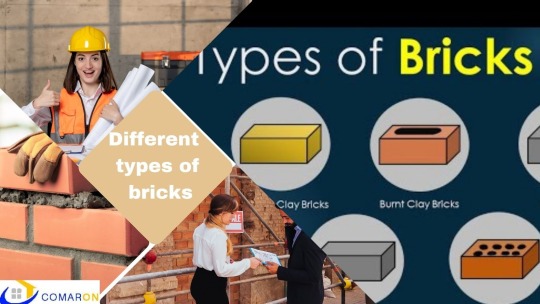#paverblocktiles
Explore tagged Tumblr posts
Text
Boundary Wall. Advantages and Disadvantages
What is Boundary Wall?
Any wall, fence, or enclosure built on, or immediately next to, the cadastral property line, as well as any additional building connected to or atop a boundary wall, including security features like spikes, barbed wire, razor wire, or electric fences.
Walls can carry a burden, divide an area, or offer protection or security. Walls can be classified as boundary walls, retaining walls, partition walls, etc. In this post, we'll talk about the boundary wall.
Height Of Boundary wall
Standard boundary wall heights vary between 1m to 2.4 m (4ft to 8ft)
Their maximum height should be 8 feet, with a minimum height of 4 to 6 feet. This is the optimal, best, ideal, usual, and typical height for a compound or boundary wall.
Learn more about Concrete Wall vs Brick Wall
Types of Boundary walls
The thickness of the boundary wall
For India Generally, the minimum thickness of a boundary wall or compound wall should be 8 to 9 inches or 200 to 230 millimetres thick as a garden fence or a home boundary wall built of bricks combined with cement mortar. This is the optimal, ideal, typical, and standard thickness for a compound or boundary wall.
Importance of Boundary Wall
To secure the entire property, improve the appearance of the home, and add an aesthetic element, boundary walls are built from cement concrete, bricks, stone, sand, aggregate, metal panel, wooden panel, polyvinyl chloride fancy, and other materials.
The first line of defense against invaders is the boundary wall. It aids in defining the property's borders and safeguards the location and house from invaders like animals, thieves, and others.
The home and its residents feel safe and protected thanks to the boundary wall.
The line that divides one property from another, as well as the obligations associated with those properties, are defined by boundary walls and fences.
To maintain positive neighbourly ties and avoid disputes, boundary lines created by walls and fences are crucial.
Boundary walls types are mentioned below
Brick Boundary Wall
Stone Boundary Wall
Wooden Boundary Wall
Steel/ Iron Boundary Wall
Concrete Block Boundary Wall
Wire Mesh Boundary Wall
Concrete Block boundary wall
Block walls became more and more common in the 20th century due to factors including the expansion of the domestic Portland cement industry and improvements in production technology.
#Brick#ConcreteBrick#flyashbrick#brickforconstruction#paverpatterns#concretepavers#paverblocktiles#pavementblocks#blocktiles
0 notes
Text
Different types of bricks
Bricks, one of the most important building materials, have been used since 7,000 BC. They are also among the earliest known building materials still in use today. Bricks provide homes with better forms, durability, stability, and a solid base. Here is all the information you want on various bricks type and their prices:

Sun-dried bricks
These are clay bricks that haven't been burned. They are moulded and let to dry in the sun.
Burnt clay bricks
Bricks that have been burned are formed of clay and placed into a kiln. They may be used to construct columns, walls, and foundations, among other things.
Fly ash bricks
These bricks, also known as self-cementing bricks, are made from Class F or Class C fly ash. In enterprises where coal is used, fly ash is collected from the furnaces. This ash comprises calcium oxide and has undergone a thermal treatment of 1,000 degrees Celsius.
Learn more about these bricks and pricing click here.
Concrete bricks
Concrete blocks were used to create these bricks. Sand, coarse aggregates, water, and cement are used to produce the concrete. The size and form may be modified to meet certain needs.
Engineering bricks
Calcium silicate bricks
Eco bricks
Glass Block
Red Brick
Interlocking Brick
#blockpavingbricks#RedBrick#blockpaving#paverblock#paverblockprice#interlockingbricksnearme#cementpaverblockprice#paverblocktiles#blocktiles#tileblock
0 notes
Text
Different types of bricks
Bricks, one of the most important building materials, have been used since 7,000 BC. They are also among the earliest known building materials still in use today. Bricks provide homes with better forms, durability, stability, and a solid base. Here is all the information you want on various bricks type and their prices:
Sun-dried bricks
These are clay bricks that haven't been burned. They are moulded and let to dry in the sun.
Burnt clay bricks
Bricks that have been burned are formed of clay and placed into a kiln. They may be used to construct columns, walls, and foundations, among other things.
Fly ash bricks
These bricks, also known as self-cementing bricks, are made from Class F or Class C fly ash. In enterprises where coal is used, fly ash is collected from the furnaces. This ash comprises calcium oxide and has undergone a thermal treatment of 1,000 degrees Celsius.
Learn more about these bricks and pricing click here.
Concrete bricks
Concrete blocks were used to create these bricks. Sand, coarse aggregates, water, and cement are used to produce the concrete. The size and form may be modified to meet certain needs.
Engineering bricks
Calcium silicate bricks
Eco bricks
Glass Block
Red Brick
Interlocking Brick
#blockpaving#paverblock#paverblockprice#interlockingbricksnearme#cementpaverblockprice#paverblocktiles#pavementblocks#tileblock#pavingblockdesign#interlockingpaverblocksdesign#paverblockdesign#brickforconstruction#ConcreteBrick#Brick
0 notes
Text
Different types of bricks | Comaron
Bricks, one of the most important building materials, have been used since 7,000 BC. They are also among the earliest known building materials still in use today. Bricks provide homes with better forms, durability, stability, and a solid base. Here is all the information you want on various bricks type and their prices: Call us at 83-770-440-77 visit our website https://www.comaron.com/blog/brick-rate
#block paving bricks#Red Brick#blockpaving#paverblock#paverblockprice#interlockingbricksnearme#cementpaverblockprice#paverblockpriceperbrass.#paverblocktiles#pavementblocks
0 notes